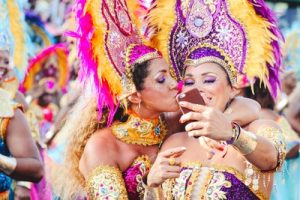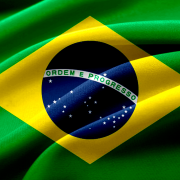Most popular festivals in Brazil
It’s really not a secret that Brazil hosts some of the most popular festivals in the world. It’s indeed an array of wildly popular events that draw not only millions of dollars in revenue but also tourist attractions, foreign investments and loads of fun. Keep in mind that it’s extremely difficult to measure the popularity of these festivals – it’s really hard to get the exact numbers. So, we’ll show you some of the most popular festivals in Brazil, but let’s face it, it’s always better to check them out by yourself after you’re done moving to Brazil.

Most popular festivals in Brazil will offer you more than just a few opportunities for cool snapshots.
One of the most popular festivals is definitely the Carnival of Brazil
Even though its name seems somewhat unoriginal at first, it remains the largest event in Brazil, except, maybe the Olympic Games, but they do not occur annually. The Carnival of Brazil is not a single event, however, and constitutes numerous events across all the large cities in Brazil. These carnivals are held separately, at different dates, and have their own little quirks, as you’ll soon find out.
The Carnival in Rio de Janeiro
This is where all the fun happens. You see, this carnival manages to attract almost (and sometimes over) five million people per year, and a few hundred thousand foreigners. You can imagine how much profit the city rakes in during the season. You see, first carnivals of this sort arrived at Rio in the 18th century, so you can easily say that it’s quite a tradition they’ve got over there. Carnival in Rio isn’t also a single carnival but multiple processions going through several of the neighborhoods. Basically speaking, every neighborhood has it’s own “little carnival”. Keep in mind that “little” is pretty relative here, as the crowds measure tens of thousands and are more than just a few kilometers long.

Most popular festivals in Brazil include costumes. Lots and lots of them.
The thing with Brazilian carnivals is that samba schools – groups of performers with some central organization – train all year round for those few days, so you can probably already assume just how important this is to the Brazilians. These groups are often funded by wealthy individuals, corporations or NGOs. By the way, do not forget to bring your costume! You can technically go without one, however, it’s gonna feel pretty weird being the only one in everyday clothes, don’t you think?
The Carnival in Bahia
Bahia is a state in Northeastern Brazil, which has its own set of cultural traditions that relate to the carnivals. That means, in short, that there are other cultural forms present. One of the main staples of carnival culture in Brazil is, you guessed it, samba. However, Bahia’s been more exposed to outside influences, and, as a result, you can various forms of dance on the streets, including (but certainly not limited to) afoxes, puxada as well as the numerous derivatives of samba, like:
- Samba de Bloco;
- Funk-samba;
- Samba-enredo, etc.
Much like Rio, Bahia and it’s capital city, Salvador, are kind of culturally polarized. This used to take a darker connotation in the past, but this is no longer the case.
Carnival in Sao Paulo
Sao Paulo is incredibly populous, and it’s carnivals are massive, and definitely among the most popular festivals in Brazil. At a first glance, it’s not that different from the carnivals in two cities mentioned above. However, that’s where I have to ask you to look a second time. You see, the main difference is that there’s no unified organization. Dance schools parade after each other, without much organization or categorization, however, their choreographies are, for lack of a better word, perfect. That being said, Sao Paulo is a cultural powerhouse.
And they don’t just dance to the same tunes. Lots of choreographies involve an artistic point. Sometimes, it’s a historical event, sometimes a charity promotion (especially if the group is funded by a charity organization) or even a political party. You’d think such blatant shows of political promotions would cause some trouble, but that’s not the case. It’s just an expression of opinion, after all.
When it comes to most popular festivals in Brazil, one cannot forget Minas Gerais

Most popular festivals in Brazil also include amusement parks.
And what makes it especially hard to forget is that it’s extremely colorful, even by the standard of Brazilians carnivals. What I’m trying to say is that the state of Minas Gerais (and the city itself) is damn big, and every smaller region – even a neighborhood – has its own troupe of performers. What’s astonishing is that in this region, most of the residents have some favorite troupe or another.
What’s more is that, as is the case in Sao Paulo, some of them are there to express a political opinion. However, people do not enter fights over it, considering that it’s also a form of art. What’s even more interesting are the various offshoots of samba music, and boy, those are numerous. As for the instruments, you can safely expect to see drums and brass everywhere. Just to clarify, brass includes instruments, such as:
- Trombone;
- Trumpet;
- Clarinet;
- French horn, et cetera.
Last but not least, let us not forget Belo Horizonte
Every year, before Lent, people of Belo Horizonte gather around the so-called Sambadromo (a circus not unlike the ancient Roman hypodromi) where they can bear witness to different troupes of musicians of different genders. If you’re more of the raunchy, extroverted and social types, you’ll be in like-minded company, considering that the Carnival will be full of students on vacation. Of course, the alcohol will flow freely. However, if you’re one of the more conservative types, you may want to visit the Baianas Ozadas block, which is slightly more cultured.
One thing’s for certain, the most popular festivals in Brazil surely have something to offer, no matter what your preferences may be. So, why don’t you pack your stuff via our packing services Brazil and hop over there for some jolly good time?









